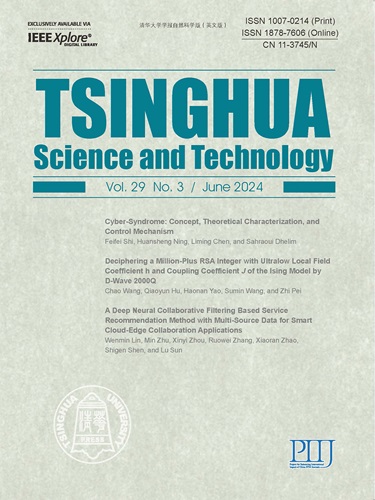Detection and Diagnosis of Small Target Breast Masses Based on Convolutional Neural Networks
IF 6.6
1区 计算机科学
Q1 Multidisciplinary
引用次数: 0
Abstract
Breast mass identification is of great significance for early screening of breast cancer, while the existing detection methods have high missed and misdiagnosis rate for small masses. We propose a small target breast mass detection network named Residual asymmetric dilated convolution-Cross layer attention-Mean standard deviation adaptive selection-You Only Look Once (RCM-YOLO), which improves the identifiability of small masses by increasing the resolution of feature maps, adopts residual asymmetric dilated convolution to expand the receptive field and optimize the amount of parameters, and proposes the cross-layer attention that transfers the deep semantic information to the shallow layer as auxiliary information to obtain key feature locations. In the training process, we propose an adaptive positive sample selection algorithm to automatically select positive samples, which considers the statistical features of the intersection over union sets to ensure the validity of the training set and the detection accuracy of the model. To verify the performance of our model, we used public datasets to carry out the experiments. The results showed that the mean Average Precision (mAP) of RCM-YOLO reached 90.34%, compared with YOLOv5, the missed detection rate for small masses of RCM-YOLO was reduced to 11%, and the single detection time was reduced to 28 ms. The detection accuracy and speed can be effectively improved by strengthening the feature expression of small masses and the relationship between features. Our method can help doctors in batch screening of breast images, and significantly promote the detection rate of small masses and reduce misdiagnosis.基于卷积神经网络的小目标乳腺肿块检测与诊断
乳腺肿块的识别对乳腺癌的早期筛查具有重要意义,而现有的检测方法对小肿块的漏诊率和误诊率较高。我们提出了一种名为 "残差非对称扩张卷积-跨层关注-平均标准偏差自适应选择-只看一次(RCM-YOLO)"的小目标乳腺肿块检测网络,通过提高特征图的分辨率来提高小肿块的可识别性,采用残差非对称扩张卷积来扩大感受野并优化参数量,提出跨层关注,将深层语义信息作为辅助信息转移到浅层,以获取关键特征位置。在训练过程中,我们提出了一种自适应正样本选择算法来自动选择正样本,该算法考虑了交集超过联合集的统计特征,以确保训练集的有效性和模型的检测精度。为了验证模型的性能,我们使用公共数据集进行了实验。结果表明,与 YOLOv5 相比,RCM-YOLO 的平均精度(mAP)达到了 90.34%,RCM-YOLO 对小质量的漏检率降低到了 11%,单次检测时间缩短到了 28 ms。通过强化小肿块的特征表达和特征之间的关系,可以有效提高检测的准确性和速度。我们的方法可以帮助医生对乳腺图像进行批量筛查,显著提高小肿块的检出率,减少误诊。
本文章由计算机程序翻译,如有差异,请以英文原文为准。
求助全文
约1分钟内获得全文
求助全文
来源期刊

Tsinghua Science and Technology
COMPUTER SCIENCE, INFORMATION SYSTEMSCOMPU-COMPUTER SCIENCE, SOFTWARE ENGINEERING
CiteScore
10.20
自引率
10.60%
发文量
2340
期刊介绍:
Tsinghua Science and Technology (Tsinghua Sci Technol) started publication in 1996. It is an international academic journal sponsored by Tsinghua University and is published bimonthly. This journal aims at presenting the up-to-date scientific achievements in computer science, electronic engineering, and other IT fields. Contributions all over the world are welcome.
 求助内容:
求助内容: 应助结果提醒方式:
应助结果提醒方式:


